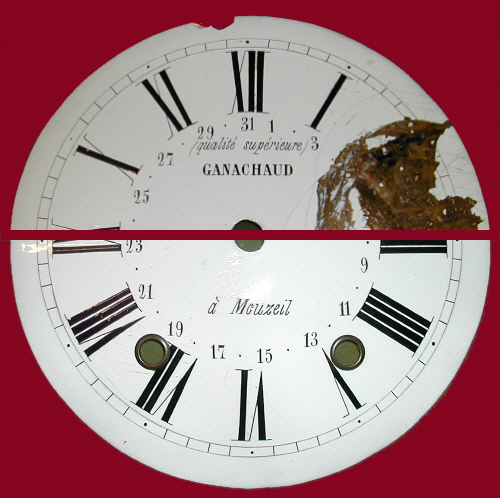Enamel

Techniques for restoration of enamel

|
Let us take the example of a clock face which has deteriorated with damage to the mounting holes and a part of enamel missing from the copper baseplate.
The first process is to verify that there are no other areas where the enamel is threatening to lift from the copper base. Once all of the face has been inspected, all loose enamel is removed. The damaged enamel is then repaired with with resin and the surface levelled. |

|
A layer of varnish is then applied to ensure the surface is perfectly flat.
Next it will be necessary to apply paint corresponding to the base color of the clock face (acknowledging that whist the clock faces are most often white, there are many shades of white) Often, after the damage is repaired, the numbers, the rails of the minutes or the signature may have been concealed. It is at this point that fine detail paintwork is applied to restore all of the missing decorations. |

|
A varnish layer will come to finish the restoration.
The final surface finish (which will be somewhere between matte and brilliant lustre) is achieved by buffing to the desired effect. |
In general, it is rarely required to restore the surface in enamel (resin is now used which is indistinguishable to they eye), but the customer is able to specify this technique whilst acknowledging that this operation will induce an additional cost.
This restoration technique is valid for all items where the face is enamel, earthenware or porcelain.
It is necessary to bear in mind that a damaged face will not bear a recuisson, and this is a distinct advantage when using the 'cold resin' restoration technique, particularly for 18th century faces or older where the graphics used are typically irregular.
Further examples of items for restoration are included.
